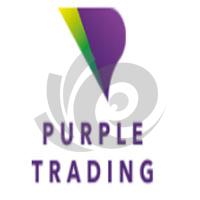The third and final part of our price behavior series will teach you how to identify reverse patterns. These are price patterns that indicate trend changes.
In the chapter on continuous chart mode, we mentioned that candlestick mode consists of one or up to five candlesticks, while chart mode, on the other hand, consists of multiple candlesticks, which take longer to create. Trendlines are typically used to identify chart patterns to help identify areas of support and resistance. Pay attention to breaking these boundaries.
What is Reverse Chart Mode?
To talk about reverse chart patterns, it needs to precede trends. Then, the reversal mode will mark the reversal of the current trend. We have already mentioned that the reversal pattern that occurs at the top of the trend is called allocation, and the reversal pattern that occurs at the bottom of the trend is called accumulation
What is the most common reverse chart mode?
The most common reverse price patterns that every trader should be aware of are here: head and shoulders, reverse head and shoulders, double tops, and double bottoms.
Head and Shoulder Pattern
This pattern is one of the most reliable indicators of trend reversal. This pattern occurs after the previous upward trend, and when completed, the market usually turns downward. Sometimes the pattern is called S-H-S (shoulder head shoulder).
This pattern is formed by three peaks, with the highest one in the middle. The middle peak of the pattern is the so-called head, and the other two peaks are the shoulders. In addition, this mode is controlled by the lower swing of the neckline connection pattern (points A and D in Figure 1).
Chart Details
There is a pattern where, after the previous upward trend, when the price reaches a new high, the left shoulder is first created and then drops to the previous upward point (point A). In the second stage, the price rises and exceeds the previous peak, leading to a higher high point (point B), and then the price drops again to the centerline, known as the neckline (point D). Then the price rose again, but this time it only created a lower high point, so the upward trend structure was disrupted. When the price crosses the neckline from top to bottom, this pattern is confirmed (see point E).
How to trade head and shoulder shapes
When the neckline is breached, the pattern is traded through short selling (speculation on price drops). To avoid daytime breaks, it is recommended to wait for the daily line to close below the neckline.
This short-term entry can be at the closing price level of the daily candlestick that breaks the neckline. Alternatively, the second option is to wait for the price to break through and retest the neckline, and then engage in short selling speculation on the price decline. The second option provides a better risk return rate while also confirming the effectiveness of rest.
This stop loss can be higher than the level of the right shoulder, or it can be higher than the last swing before the collar breaks through.
There are two possibilities for setting a target price:
The first option is to place the target price at the level of the first support. The second and more radical option is that the target price should be the same distance from the top of the form to the neckline. Therefore, in our example, the length of the moving BC should be equal to the length of the moving CF.
Some important insights about the head and shoulder pattern:
For the shape to be defined as the head and shoulders, there must be a clear upward trend before it.
No shoulder should be higher than the top of the head.
The neckline must be horizontal or ascending. For this formation, the collar must not drop. If the neckline is falling, it indicates that the shape is weak.
The top of the shoulder should be roughly at the same level.
This mode occurs across all time ranges. We suggest watching it, especially on daily or weekly charts. For example, the analysis can be supplemented by moving averages.
Reverse Head and Shoulder Pattern
This pattern is also an opposite form, appearing after the previous downward trend, indicating that the market is bullish and the trend may soon reverse. This mode is called reverse head and shoulder, and an example of it can be seen in the following figure:
The pattern consists of three bottoms, with the first and third bottoms - the shoulders are higher than the second bottom, which is where the head of the pattern is located.
How to trade reverse head and shoulder patterns:
The same principle applies to the trading model, just like the head and shoulders but in opposite directions. After breaking through the neckline (F-point), we enter long trading and place the stop loss below the low point of the third bottom of the form (right shoulder) or the last swing before the neckline breaks. The target price is the closest price resistance level or the distance between the peak of the pattern and the neckline (in this case, the CB distance is the same as BF).
Some important insights about the reverse head and shoulder pattern:
There must be a clear downward trend before this mode.
Shoulders should not be lower than the top of the head.
The neckline must be horizontal or descending. In this mode, the collar must not rise.
The top of the shoulder must be at the same level.
In fact, there may be some deviations, but the closer you approach the above rules, the more reliable the pattern becomes. Other technical analysis tools such as moving averages can also be used to supplement the analysis


 Source:Purple Trading
Source:Purple Trading




